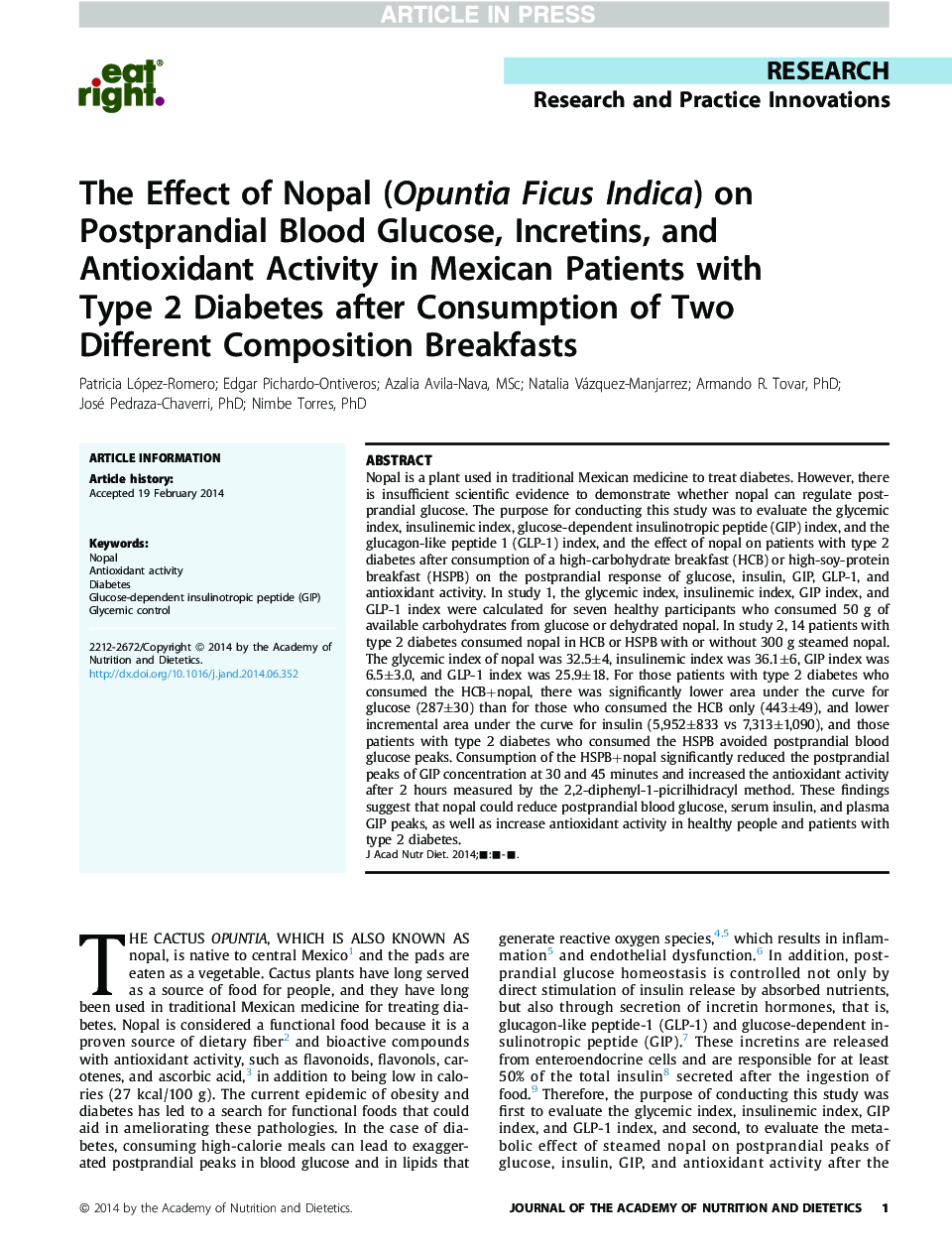| Article ID | Journal | Published Year | Pages | File Type |
|---|---|---|---|---|
| 5870016 | Journal of the Academy of Nutrition and Dietetics | 2014 | 8 Pages |
Abstract
Nopal is a plant used in traditional Mexican medicine to treat diabetes. However, there is insufficient scientific evidence to demonstrate whether nopal can regulate postprandial glucose. The purpose for conducting this study was to evaluate the glycemic index, insulinemic index, glucose-dependent insulinotropic peptide (GIP) index, and the glucagon-like peptide 1 (GLP-1) index, and the effect of nopal on patients with type 2 diabetes after consumption of a high-carbohydrate breakfast (HCB) or high-soy-protein breakfast (HSPB) on the postprandial response of glucose, insulin, GIP, GLP-1, and antioxidant activity. In study 1, the glycemic index, insulinemic index, GIP index, and GLP-1 index were calculated for seven healthy participants who consumed 50 g of available carbohydrates from glucose or dehydrated nopal. In study 2, 14 patients with type 2 diabetes consumed nopal in HCB or HSPB with or without 300 g steamed nopal. The glycemic index of nopal was 32.5±4, insulinemic index was 36.1±6, GIP index was 6.5±3.0, and GLP-1 index was 25.9±18. For those patients with type 2 diabetes who consumed the HCB+nopal, there was significantly lower area under the curve for glucose (287±30) than for those who consumed the HCB only (443±49), and lower incremental area under the curve for insulin (5,952±833 vs 7,313±1,090), and those patients with type 2 diabetes who consumed the HSPB avoided postprandial blood glucose peaks. Consumption of the HSPB+nopal significantly reduced the postprandial peaks of GIP concentration at 30 and 45 minutes and increased the antioxidant activity after 2 hours measured by the 2,2-diphenyl-1-picrilhidracyl method. These findings suggest that nopal could reduce postprandial blood glucose, serum insulin, and plasma GIP peaks, as well as increase antioxidant activity in healthy people and patients with type 2 diabetes.
Related Topics
Life Sciences
Agricultural and Biological Sciences
Food Science
Authors
Patricia López-Romero, Edgar Pichardo-Ontiveros, Azalia MSc, Natalia Vázquez-Manjarrez, Armando R. PhD, José PhD, Nimbe PhD,
